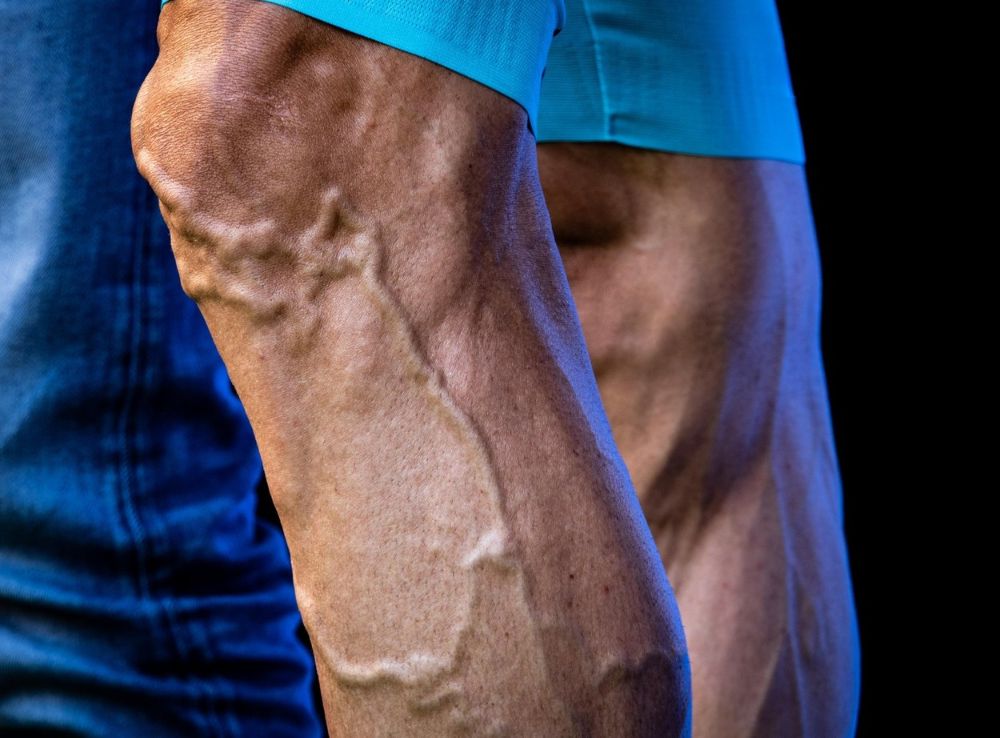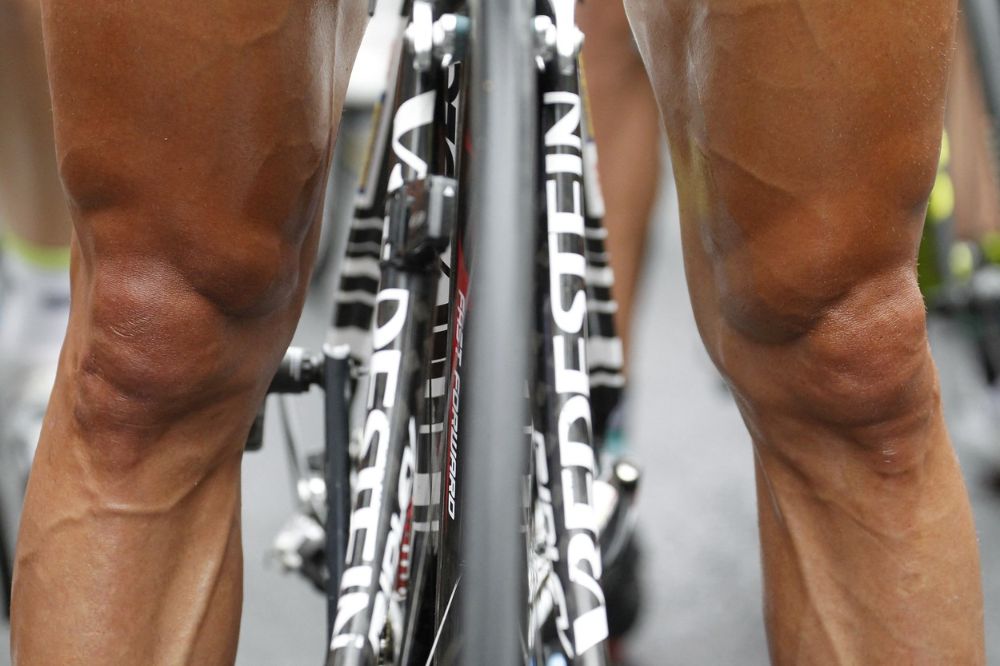What you see in those images from Tour de France riders is something that happens to all of us to a certain extent. When you exercise in warm conditions, your blood flow increases and veins expand. But you might not even notice. Let’s examine the main differences between you and the pros that make their legs look so crazy compared to yours when you exercise.

Low body fat
The most obvious reason your legs don’t look as veiny is body fat. The average active man might have around 20% body fat, while women have around 25% body fat. Professional cyclists at the Tour de France have as low as 6%. There’s no visible layer of fat covering their veins. But still, there are many slim people and their legs don’t look like this. We need to delve deeper.
A super-developed blood supply network
The vascular system is just as important as leanness if you want veiny legs. The gruelling training that elite cyclists go through puts a big strain on their vascular system. They need to push a lot of oxygenated blood into the leg muscles and extract deoxygenated blood back out to the heart and lungs. Both their arteries and veins have to increase in diameter to accommodate this. And they also get much better at dilatation, expanding when under pressure.
High blood volume
Having a well-trained vascular system won’t produce a veiny look if there’s not a sufficient amount of blood to fill it. An untrained person has around five litres of blood, around 50-75 ml per kilogram, or 5-7% of body mass. A world-class endurance cyclist might have 7-8 litres, as much as 150 ml per kilo, or 15% of body mass. In other words, those bulging veins are being filled with twice as much blood than the average person.
The filtration process
There’s one more effect in play. When you exercise, your blood pressure increases, which can force plasma fluid into compartments surrounding the muscles. This process is known as filtration and causes swelling and hardening of the muscle. That in turn pushes your veins even closer to the skin’s surface. If all of that wasn’t enough, there are still genetics! Some riders are simply more genetically predisposed to having very veiny legs.

Should you try to have legs like that?
That depends on your goals. If you’re after that kind of aesthetic then it might be a worthwhile reason to train extra hard. But keep your expectations realistic. Most people will likely never reach the levels of Tour de France riders.
Observing how your legs look can still be useful as a way to see progress. A few more veins rising to the surface is definitely an indicator of improved fitness, decreased body fat, or both.




